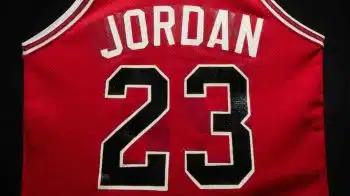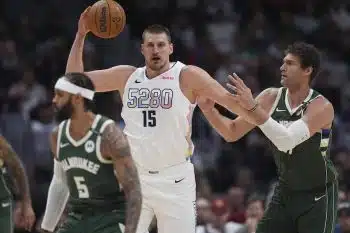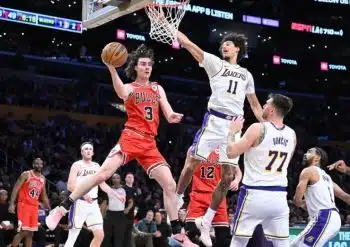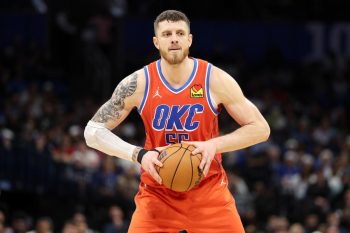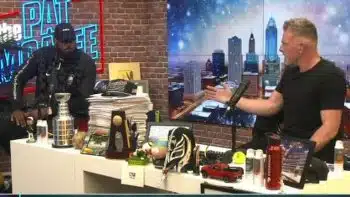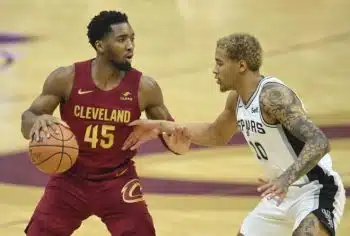NBA
Derrick Jones Jr. Is Exactly What The Mavericks Needed
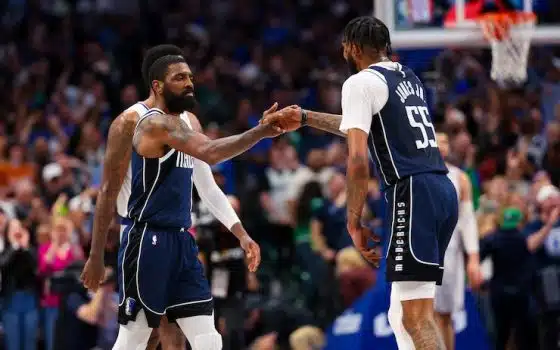
Key Highlights
- Derrick Jones Jr. is averaging 9.4 points, 4.2 rebounds and 1.6 blocks per game in the playoffs, while shooting 41.7 percent from three and 63.6 percent on two-pointers
- The Dallas Mavericks have outscored the Los Angeles Clippers by 25 points during Jones’ 140 minutes
- Jones has been an integral part of Dallas’ success this season, with his plus-1.8 Defensive Estimated Plus-Minus ranking 41st league-wide
The 2024 trade deadline revolutionized the Dallas Mavericks’ season. After hovering around .500 through early February — desperately clawing to avoid the Play-In — the Mavericks landed P.J. Washington and Daniel Gafford before closing the year 21-7 and vaulting to fifth in the West at 50-32.
Led by Luka Doncic and Kyrie Irving, the Mavericks sought more range and size on the interior. Washington and Gafford’s arrivals provided both, while unlocking loads more lineup versatility.
As opposed to his predecessor in Grant Williams, Washington was actually the burly wing defender they craved who also offered some off-the-bounce pizazz, despite his frigid outside shooting. Gafford gave them another springy lob threat and proved especially crucial when Dereck Lively III missed the final eight regular season games.
Dallas’ supporting cast is refined and vital, but neither midseason acquisition has served as the star role player through five games. Washington’s malleable defense has been excellent, but he’s also misfired on 75 percent of his threes, most of which have been comfortable looks. Gafford’s battled the injury bug a bit, seen his playing time fluctuate and is also shooting just 40 percent from the floor as a rim-running center.
Why Is Derrick Jones Jr. So Important For Dallas?
Instead, it’s been an incumbent role player, one signed late in the summer to a veteran minimum deal after weeks spent toiling in the limbo of unemployment: Derrick Jones Jr. During his first seven years, the sprightly 6-foot-7 wing bounced across the league — Phoenix to Miami, then Portland to Chicago — and never quite found an environment suited for him. He’s always been a high-flyer, but a rickety jumper and the need to harness his physical tools into consistent defensive pressure made for a rigid fit at prior stops.
That’s changed in Dallas, where his athleticism, defensive chops and off-ball instincts have rendered him integral to the Mavericks’ success. For years, they’ve coveted a defensive-minded forward who could thrive offensively playing alongside Doncic’s brilliance. Jones has been exactly that, leading a role player ensemble plugging gaps around the offensive wunderkinds.
He’s leveled up through five playoff appearances. It’s helped guide Dallas to the brink of the second round, holding a 3-2 lead over the Clippers entering Friday’s Game 6. Jones is averaging 9.4 points, 4.2 rebounds and 1.6 blocks. Sporting a 62.6 true shooting percentage, he’s converted 14 of his 22 twos (63.6 percent) and five of his 12 triples (41.7 percent).
To impede Doncic and Irving’s operating space, Los Angeles is disregarding many of Dallas’ shaky off-ball shooters. Jones has punished that gambit when the action flows his direction. He’s a perceptive cutter and is parlaying the extensive runways afforded to him into smooth, bouncy, punishing finishes. When the rim is in sight, he’s reminding everyone that he’s a former Slam Dunk Contest champion with a 46-inch vertical and the nickname Airplane Mode Jones. It looks like he skips a frame on a few of these buckets.

All the while, he’s wrangled with each of Los Angeles’ stars, namely Paul George. Some of George’s mercurial play is rooted in his hesitant decision-making. When he’s decisive, the Clippers and his offensive footprint flow much better.
But that’s not the sole culprit for his inconsistencies. Jones has hounded the veteran star, who typically curls around wide pindowns into his office of work. George’s hesitancy is a byproduct of Jones’ bombardment. It’s not as simple as “execute the first decision you see or feel” when Jones is tethered to him, ready to pounce and leverage his physical tools. His screen navigation is bendy, elegant and persistent.
Screens are supposed to be a fruitful revolving door for offenses: one person through, then a delay before the next follows behind and is left playing catch-up. Jones is cramming himself into that first door alongside George.
It’s made him uncomfortable and illuminates one of the reasons George has games with only 11, 13 and 14 shots amid Kawhi Leonard‘s absence and on-court limitations. Los Angeles demands a sharper, more aggressive version of George. Jones has dictated it untenable on plenty of possessions.

Jones’ foremost contributions have come bottling up George. But he’s also taken advantage of the Clippers’ own spacing concerns, moonlighting as an interior custodian to deny them fortuitous chances at the rim. There’s such an emphatic denial on some of his rejections, as if to not just turn them away there, but to dissuade them from venturing into his orbit ever again. He’s a trampoline park brought to life.

In this series, Dallas touts a 98.9 defensive rating with Jones on the floor. When he rests, that number craters to 117.7. He’s been a multifaceted stopper, occasionally trying his hand and succeeding against James Harden, the southpaw sniper who’s induced the biggest headaches for the Mavericks thus far.
Jones is an archetype the playoffs are often unkind toward: a defensive-minded wing without fearsome shooting credentials. Any harsh wakeup has yet to materialize. It’s also the upshot of existing in Doncic and Irving’s galaxy. They simplify offense, especially Doncic, an intrepid, Picasso-style passer willing to sample any read if the result might be a basket.
Jones’ finishing bravado and efficacy certainly help, too. The perils of 34 percent three-point shooting can be less damaging if a viable alternative is eat up the space ahead of you and score at the rim. He’s done that, discretely balancing jumpers with interior endeavors.
Maybe, the long ball soon turns cold, the baseline cuts dry up and a different option in Dallas’ wing reserves becomes more appealing. For now, though, the journeyman is flourishing. He’s priming himself a lucrative payday — one that ideally brings future stability somewhere he can keep doing precisely what he’s done the past seven months. It’s a valuable skillset being broadcast on a national stage, exactly the place the Mavericks have long hoped it would benefit them.
